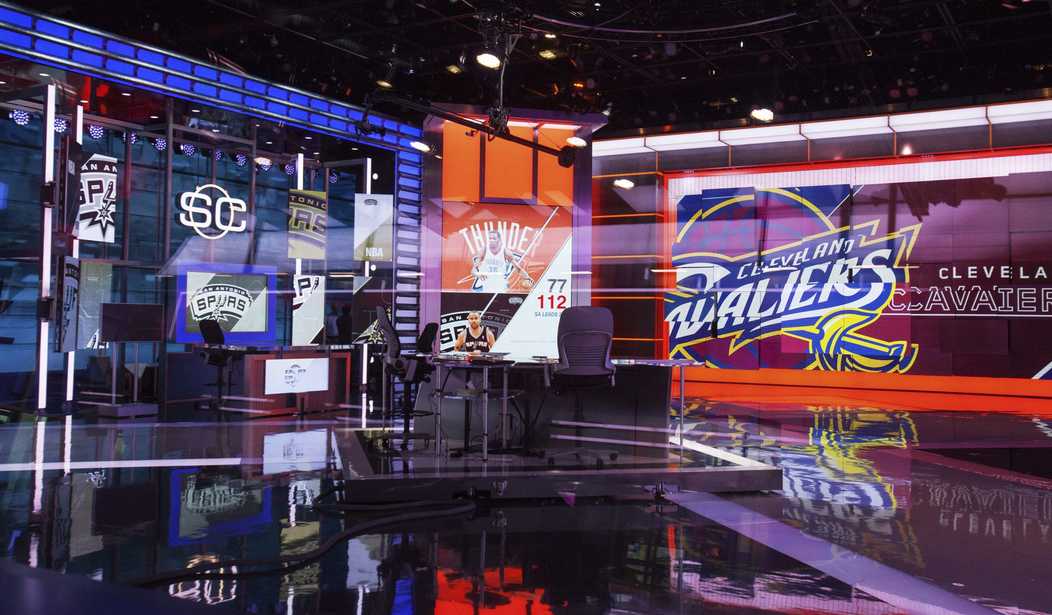In March, several outlets gleefully reported that ESPN was near collapse as a network. Conveniently, several of these reports came from competitors to ESPN who hope to capitalize and gain market share. Nonetheless, it is true that ESPN will be cutting $100 million in salaries — most from very recognizable on-air talent — in a cost-cutting move to shore up their bottom line.
This new report comes mere months after a report showing that ESPN is losing subscribers at an alarming rate. In November 2016, ESPN lost over 600,000 subscribers, its worst month ever. ESPN has historically been a workhorse performer, one of the most successful cable channels of all time. Driven by live events, previously unavailable sports updates, an offbeat delivery, and compelling content, ESPN reached must-watch status and stayed there for a couple of decades. At the height of their popularity, in 2011, ESPN was available in over 100 million homes. A few years ago, however, the tide began to ebb. As of December 2016, that number had dropped to 88.4 million — a steady, inexorable decline.
This has resulted in a precipitous drop in ad revenue at ESPN and its corporate parent company, Disney. This is what is driving the next round of layoffs.
The reasons for this collapse are multifaceted. Let’s examine the top reasons for the decline of ESPN.
1. Cutting the cord

Image via Wikipedia Creative Commons by SA
The phenomenon of television consumers refusing to pay cable giants for original content is real, and it’s growing. Over one million American households cut the cord in 2015, opting for one of several options — free over-the-air TV, inexpensive streaming options such as Hulu, Netflix, and Amazon Fire, or simply opting out of live television altogether. ESPN has done next to nothing to penetrate the streaming content market, which leaves them out of a large segment of younger consumers who will find other options. Until ESPN changes this approach, this will limit the number of new, young, potential lifetime consumers available to them.
2. Bad programming

By RCA [Public domain], via Wikimedia Commons
ESPN has struggled for many years to find new, compelling content to draw in new viewers while keeping their existing viewers engaged. These efforts have yielded mixed results. Their 30 for 30 franchise has met with fantastic success, culminating in the Oscar for Best Documentary, awarded to OJ: Made In America. However, other series have been less successful, owing to demographic shifts and changes in tastes regarding their on-air talent. The signature sports news show, SportsCenter, has seen a dramatic drop in ratings in recent years.
Once an anchor for ESPN programming, ratings have plummeted 27% since 2010, and a whopping 36% among the all-important 18-34 demographic. Creating more debate shows wherein two talking heads yell at each other for half an hour, mirroring cable news networks, has done little to stem the apparent fatigue with the format. This leads into the next problem with ESPN’s programming …
3. Agenda-driven programming

By US Mission to the UN [Public domain], via Wikimedia Commons
The brass at ESPN has taken a decidedly leftward tack in its programming. They either deny that it’s happening, or deny that there is anything wrong with expressing tolerance and diversity. (Says SportsCenter host Jemele Hill, “I would challenge those people [on the right] who say they feel suppressed. Do you fear backlash, or do you fear right and wrong?”) But gone are the days when ESPN kept politics out of its programming and deliberately avoided alienating half of its audience.
One of the most vocal critics of ESPN’s embrace of progressivism is Clay Travis, a national radio host on competitor Fox Sports Radio. Travis is no conservative himself, having worked on Al Gore’s presidential campaign in 2000. Travis has nonetheless been relentless in his criticism of ESPN in both his on-air broadcasts and on his blog, Outkick The Coverage. He wrote in February that “ESPN decided to become a social justice warrior network, treating all liberal opinion makers as those worthy of promotion and casting aside all those who had the gall to challenge the new Disney world order. ESPN became MSESPN.” Or as a friend of mine puts it, they have become ES(JW)PN. When you alienate half of your potential consumers, why should you expect their uninterrupted loyalty?
4. Overpayment for rights fees

By Steve Jurvetson (Flickr) [CC BY 2.0] via Wikimedia Commons
ESPN has grossly overpaid for rights fees for the NFL and NBA, and is locked into those deals for several years. The model currently at work has made the NFL and the NBA and their players super-duper rich, but will lead to financial ruin for the network. Not enough TV consumers are compelled to sign up for cable just to get ESPN and watch the live sporting events for which they have the exclusive rights. Fans can just tune in to the over-the-air network NFL games available on Fox, NBC, and CBS. Free over-the-air TV still has a vastly larger audience than cable. Sunday Night Football — available for free on NBC — has eclipsed Monday Night Football on ESPN (for an expensive subscription) in importance and viewership.
Eventually, as Clay Travis notes, the decline in subscribers combined with the exorbitant rights fees will turn ESPN from a profit machine into a significant money loser. Ad revenues have already plummeted and will continue to do so as ESPN is unable to wriggle out of their current contracts. ESPN and Turner Sports signed a contract extension for the NBA that kicks in this season that is truly exorbitant — 9 years, $24 BILLION. That means ESPN is locked into their NBA rights — which they can’t transfer to their over-the-air partner, ABC — until 2026. Their contract with the NFL is equally crazy: $15 BILLION through 2021. In both cases, ESPN outbid itself, paying significantly more in rights fees than previous contracts.
5. Ratings for live sporting events are down

San Francisco 49ers quarterback Colin Kaepernick sits on the sideline during the second half of an NFL football game against the Atlanta Falcons in Santa Clara, Calif. (AP Photo/Ben Margot, File)
Ratings for Monday Night Football dropped 24% in 2016. The blame for this is shared equally by the NFL and its corporate media partners. The NFL product has become as uncompelling as I can remember as a lifelong football fan. Primetime games last season were terribly boring, which has dampened the excitement leading into Sunday. The league has also overly complicated the rule book, leading to awful refereeing. This creates a strong sense of fan dissatisfaction. The NFL and their corporate media partners have also attempted to market outside their core strengths, trying to bring in fringe fans by sacrificing the base fans. They have lost sight of the fact that the game is inherently dramatic. In my opinion, the NFL should concentrate on putting that drama on full display, instead of making up fringe narratives that nobody but casual fans could possibly care about.










Join the conversation as a VIP Member